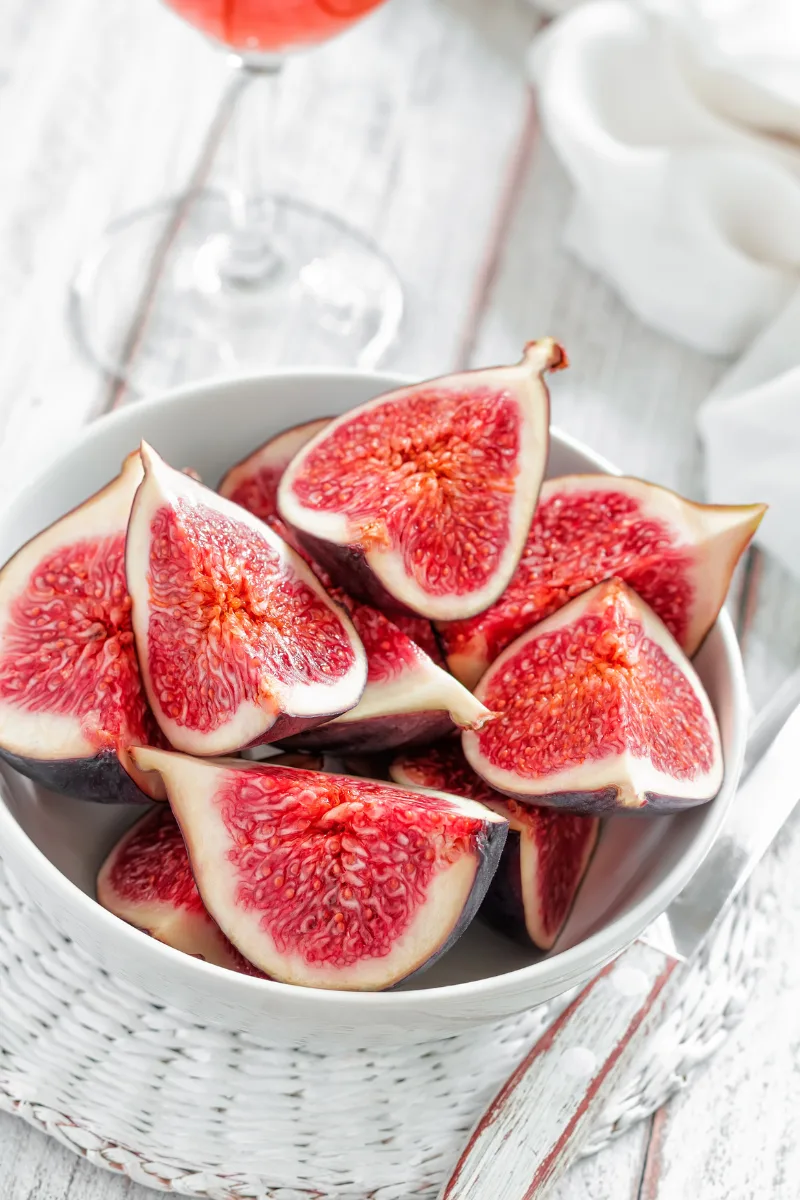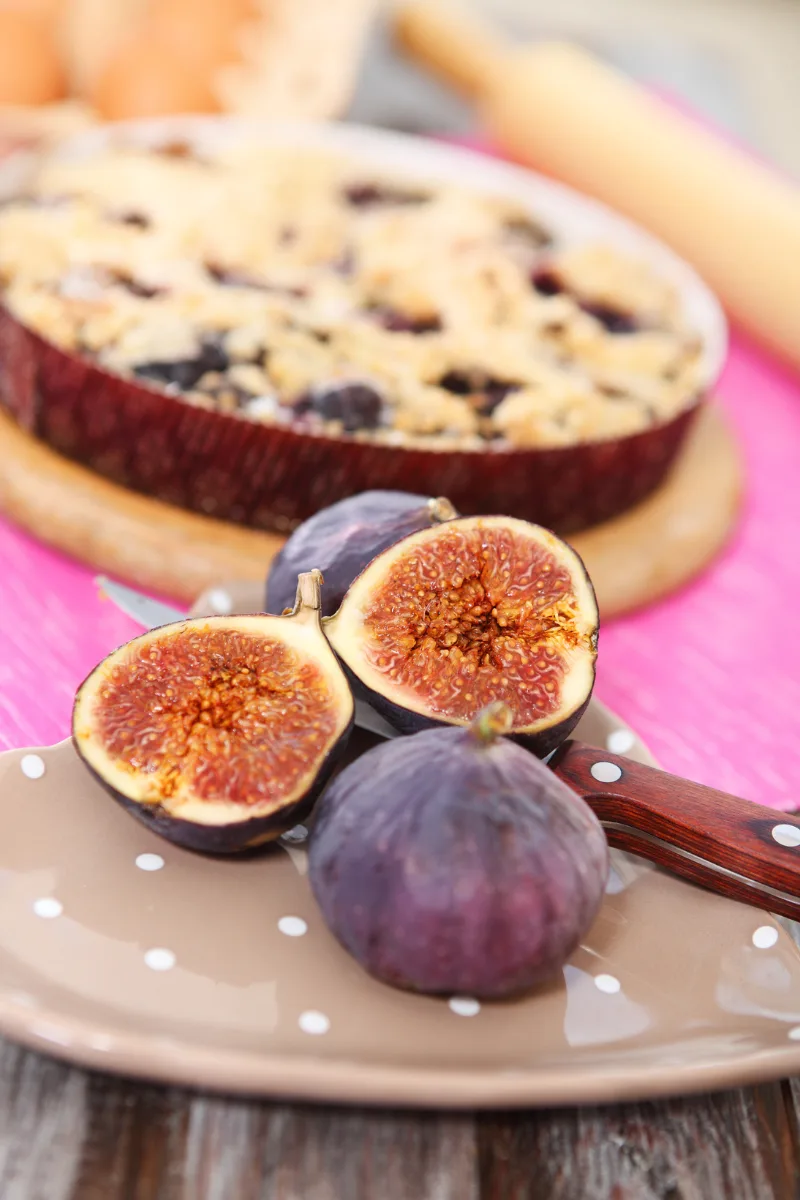If you’re looking for a delectable and healthy way to enjoy some of nature’s finest produce, fresh fig recipes should definitely be on your menu.
When it comes to Fresh Fig recipes, there are few fruits as unique and versatile as this Mediterranean gem. With their tender flesh and sweet, honeyed flavor, figs have been a beloved fruit for centuries. Not only do they taste amazing on their own, but they also lend themselves well to a wide range of recipes that showcase their flavor in both sweet and savory dishes. With their high nutritional value and unique taste profile, it’s no wonder that fresh fig recipes are gaining popularity all over the world.
So if you’re looking to spice up your meals with some delicious and healthy fig dishes, look no further than these mouthwatering recipes that will leave you craving more.

What To Do With Fresh Figs
One simple and delicious way to enjoy fresh figs is to eat them on their own. Just give them a rinse under some cool water and bite right in! They’re a great source of fiber and vitamins, and their natural sweetness can satisfy a sweet tooth without the need for added sugars. Fresh figs are also a great addition to any charcuterie board, adding a unique flavor and texture that sets them apart from other fruits.
If you’re looking for something a little more complex, there are plenty of recipes that incorporate fresh figs in creative ways. One popular dish is fig and goat cheese pizza, which combines the sweet and savory flavors of fresh figs with tangy, creamy goat cheese and a crispy pizza crust. Another classic recipe is fig jam, which can be spread on toast, cheese plates, or even used as a glaze for meats and vegetables.
If you’re feeling adventurous, there are a number of international recipes that use fresh figs in unconventional ways. In Sardinian cuisine, for example, fresh figs are used to make a dessert known as “pabassinas,” which are sweet, chewy cookies made with almonds and honey. In Middle Eastern cuisine, figs are often used in savory dishes like tagines and stews, where their natural sweetness helps balance out spicier ingredients.
Fresh figs are a versatile and delicious fruit that can add a unique flavor and texture to a wide variety of dishes. Whether you eat them on their own or incorporate them into more complex recipes, they’re sure to be a hit with anyone who appreciates great food!
How To Store Fresh Figs
When it comes to storing fresh figs, it’s essential to know how to preserve their quality and taste. These fruits are highly perishable, and their shelf life can be quite short if not stored correctly.
It’s essential to know that figs are susceptible to spoiling because of their high moisture content. Therefore, it’s best not to wash them until you’re ready to eat or use them. When stored correctly, fresh figs can last up to five days in the refrigerator. To store fresh figs, put them in a plastic bag with a paper towel to absorb excess moisture, then seal the bag. This will help maintain the fruit’s texture and prevent it from becoming too soggy.
Another way to store fresh figs is to freeze them. To do this, rinse them thoroughly, then pat them dry with a paper towel. Once dry, place the figs in a single layer on a baking sheet and freeze for about an hour. Once frozen, you can transfer them to an airtight container or a plastic bag.
Frozen figs can last for up to six months, and they’re perfect for smoothies, topping a yogurt bowl, or even using them in baking.
Fresh figs are an excellent addition to any diet, but proper storage is crucial to keep them fresh and delicious. Whether you choose to refrigerate them or freeze them, following these steps will help you extend the shelf life of your fresh figs.
Remember, these fruits are highly perishable, so be sure to consume them within a few days of purchase, and avoid storing them in the refrigerator for too long. By taking the time to store them correctly, you’ll be able to enjoy the delicious taste of fresh figs for an extended period of time.

Baking Tips With Fresh Figs
It’s important to choose ripe figs for baking. Ripe figs should be soft to the touch, and the skin should be slightly wrinkled. If the figs are too firm, they won’t have as much flavor or sweetness. When baking with fresh figs, it’s best to use them within a day or two of purchasing. If you can’t use them right away, store them in the refrigerator and use them within a week.
When incorporating fresh figs into baked goods, it’s important to consider their texture. Unlike dried figs, which can be chewy and tough, fresh figs are delicate and can become mushy when baked. To prevent this, it’s best to chop them into small pieces or slice them thinly. This will help them cook evenly and retain their shape. Another option is to roast them beforehand to intensify their flavor and make them more firm. Simply toss the sliced figs with a bit of honey or brown sugar and roast at 400°F for about 10-15 minutes.
Working with fresh figs in baking can be a delicious and rewarding experience. With their unique flavor and delicate texture, they can add a special touch to muffins, cakes, and even breads. Just remember to choose ripe figs, consider their texture, and don’t be afraid to experiment with different spices and flavor combinations.

What To Make With Fresh Figs
If you’re lucky enough to get your hands on some fresh figs, you’re in for a treat! These plump little fruits are not only delicious, but also packed with nutrients. Figs are a good source of fiber, potassium, and calcium, and they’re also rich in antioxidants.